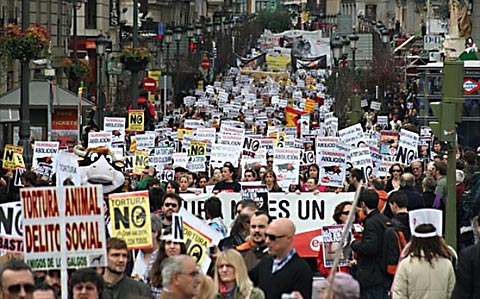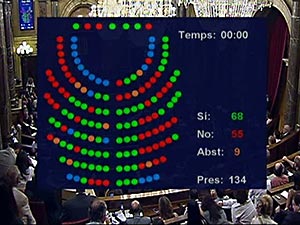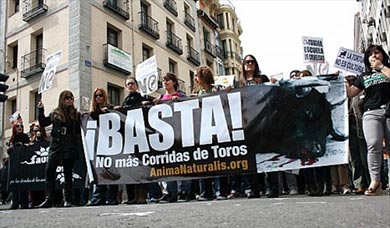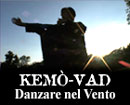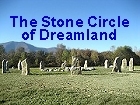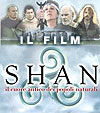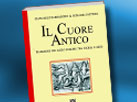| English Page |
Torture is not my culture |
 |
 |
| 17 October 2011 | ||||||
Barcelona abolish bullfighting. A growind number of Spaniard fights against the tauromaquia
“There’s an amazing Full Moon tonight. The wind is so cool and silence covers it all with its mantle. It might be a perfect night… but it is also my last night. Everything has been nothing but a big lie until now, and when the Sun rises again, the truth will be revealed. I was born with the sole purpose of dying.”
I still remember the very first time I saw a bull die struck down by a sword. I’m not sure how old I was, very little I guess. My grandfather was sitting next to me, completely focused on the TV screen. I can still remember the environment was so warm it suffocated me, must have been summer, around 6 in the afternoon. Onscreen, a man was standing in front of the animal, aiming a sword at him while the bull was looking down to the ground following the movements of the red cape… after a couple seconds of staring at each other, that cold metal was driven inside the animal’s body while the crowd applauded. The bull, struggling to remain on its feet, waved his head now looking up in the air. Its legs began to bend until it fall dead, covered in its own blood on the arena. “Is it dead, grandpa?” just a quick look at me not to lose track of what was going on in the TV “not yet… it still fights, but it won’t be for long”. The crowd cheered, waving white scarves. A man leaned down the bull while drawing a knife. Both bull’s ears were cut right there, that was the prize for the other man with the sword. That was the first time in my life I witnessed a murder. Sadly, it wouldn’t be the last. How is it possible that murder is embraced as part of a nation’s identity? That is the question so many of us Spaniards ask ourselves every day, one question for which we have not found yet a rational answer. To date, in the midst of the struggles for the rights of life and freedom, animals are still being murdered for entertainment, on a basis of political and economic interests. However, opposition to the tauromaquia (bullfighting) is not something new. Throughout history many intellectuals, politicians and even the Church have tried to end this so-called practice, unsuccessfully. Now, what are those arguments the tauromaquia supporters allegedly have to justify this kind of torture and cruelty against these animals? They go like this:
Regarding the bull itself “no one else admire its beauty, no one demand more fiercely it integrity and upset with more rage against any abuse, contempt or mishandling of the bull.” (Andrés Amorós, “Escritores ante la Fiesta (De Antonio Machado a Antonio Gala)”, Madrid, Egartorre, 1993). According to the tauromaquia supporters, bullfighting is not the cruelest fate for a bull, and in order to justify such claim, they explain that fighting bulls’ breed during their lifetime have a preferential treatment compared to the cattle bulls’ breed. The supporters also say that, if it wasn’t for the bullfighting practice, the bullfighting breed would extinguish because it’d be costly to maintain for any other purposes. Well now… to what extent is that “better life” real for the bullfight breed that tauromaquia supporters praise so much? Can we include in the “better life” all the pain and suffering that’s Can the bullfighting breed even be considered a different species? Dis fighting bulls even exist before this practice appeared or was it the practice itself that molded a new breed? Obviously points of view are absolutely opposite between supporters and detractors, without a chance to ever reach an understanding. However, Spanish opinions have shifted tin time: In 2002 (“Interest for the BullFighting Spectacles”, 2002 Gallup Institute’s Survey) we found out that after being questioned, 31% of the Spanish population found bullfighting either very or somewhat appealing, while 68.8% had no interest at all (in the early 70’s approximately 55% of the population were attracted to it, in the 80’s the ratio decreased to 50% of interest and during the 90’s numbers still fell to just over 30%). In 2006, 72.1% of the Spanish population assured to have no interest for the tauromaquia spectacle. Regardless of the lesser interest shown in the matter, 500 million euros were given to the tauromaquian sector in Spain in the form of subventions and nearly 600 million in 2008. A Step Forward: The banning of the bull fights in Spain Two are the communities that to date have taken the necessary steps to ban the bullfighting shows: Canarias and Catalunya.
On April 30th, 1991, and according to a Popular Legislative Initiative driven by the regional deputy Miguel Cabrera Pérez-Camacho, the Canarian Law (8/1991) for animal preservation was modified. Spite of covering exclusively “domestic and companion animal beings”, in its 5th article it established: “The inclusion of animals in fights, celebrations, spectacles and any other activity that incur on mishandling, torture, cruelty or suffering to them is banned.” Although there is no specific banning of the bullfighting spectacle (since the bullfighting breed is not considered domestic and/or animals of companion), since the mid-80’s no tauromaquian spectacle has taken place in the Canarias.
Catalunya: January 1st, 2012 Only a few months have passed since the banning of the first bullfighting spectacle (inside Catalunyan territory), sanctioned by the Catalunyan Parliament on July 28th, 2010, to be enforced. However, this sanction hasn’t gone without debacle, since the text approved is only intended expressly to “those activities and spectacles involving bulls that culminate with the animal’s death”, those typical to the bullfighting itself: “pike, ensigns and rapier” both in and outside the arenas; they do not apply to “festivities with bull without the animal’s death (“correobus”) in dates and locations where they traditionally occur. In such cases, it is forbidden to harm the animals in any way.”
There is still a long way to go in the defense and protection of animal rights, and not only in Spain. Countries like France, Portugal, Mexico, Ecuador, Colombia, Peru, still have bullfighting and other practices toward these animals such as spectacles where they are tortured and harmed. Associations, organizations and political parties like Galicia, Mellor Sen Touradas, PACMA (Partido Animalista Contra el Maltrato Animal or Pro-Animal Party against Animals Harm), PROU!, CACMA (Colectivo Andaluz Contra el Maltrato Animal or Andaluzian Collective against Animals Harm) in Spain, M.A.C. (Movimiento Antitaurino de Colombia or Colombian Antitauromaquian Movement), ALCO (Animales Libres de Crueldad y Opresión or Cruelty and Oppression Free Animals – Peru), PAE, Anima Naturalis and Pro Anima in Ecuador, CAS International in the Netherlands... all keep fighting day after day so that the time may soon come when no animal needs to undergo torture by human hands. |
 -->
-->
